- Clone
- LG.3A10 (See other available formats)
- Regulatory Status
- RUO
- Other Names
- T14, S152, Tp55, TNFRSF7
- Isotype
- Armenian Hamster IgG
- Ave. Rating
- Submit a Review
- Product Citations
- 17 publications
| Cat # | Size | Price | Quantity Check Availability | Save | ||
|---|---|---|---|---|---|---|
| 124209 | 50 µg | 94€ | ||||
| 124210 | 200 µg | 268€ | ||||
CD27 is also known as S152 and T14. A member of the tumor necrosis factor receptor (TNFR) superfamily, it is a 45 kD protein expressed on peripheral T cells, memory B cells, NK cells, and thymocyte subset. Through its ligand, CD70, CD27 plays a key role in T cell and B cell interactions. Additionally, ligation of CD27 on naïve T cells may be important in their maturation to effector cells.
Product DetailsProduct Details
- Verified Reactivity
- Mouse, Rat, Human
- Antibody Type
- Monoclonal
- Host Species
- Armenian Hamster
- Immunogen
- Armenian hamster fibroblast line ARHO12 transfected with mouse CD27 cDNA
- Formulation
- Phosphate-buffered solution, pH 7.2, containing 0.09% sodium azide
- Preparation
- The antibody was purified by affinity chromatography, and conjugated with PE under optimal conditions.
- Concentration
- 0.2 mg/ml
- Storage & Handling
- The antibody solution should be stored undiluted between 2°C and 8°C, and protected from prolonged exposure to light. Do not freeze.
- Application
-
FC - Quality tested
SB - Community Verified - Recommended Usage
-
Each lot of this antibody is quality control tested by immunofluorescent staining with flow cytometric analysis. For flow cytometric staining, the suggested use of this reagent is ≤ 0.25 µg per million cells in 100 µl volume. It is recommended that the reagent be titrated for optimal performance for each application.
- Excitation Laser
-
Blue Laser (488 nm)
Green Laser (532 nm)/Yellow-Green Laser (561 nm)
- Application Notes
-
Additional reported applications (for the relevant formats) include: functional assay1,3 and immunohistomecial staining of acetone-fixed frozen sections2. The Ultra-LEAF™ purified antibody (Endotoxin < 0.01 EU/µg, Azide-Free, 0.2 µm filtered) is recommended for functional assays (Cat. Nos. 124243 & 124244).
- Additional Product Notes
-
For the use of this antibody in spatial biology (SB), we have partnered with Bruker Spatial Biology Biosciences for demonstration of this antibody on their next-generation ChipCytometry instrument called the CellScape™. The CellScape platform is an end-to-end solution for highly multiplexed spatial omics. Combining an advanced, purpose-built imaging system with easy-to-use fluidics for walk-away automation, the CellScape system will accelerate your exploration into the rapidly evolving field of spatial biology. More information on the the Bruker Spatial Biology CellScape and a complete list of our antibodies that have been demonstrated on the instrument can be found here.
-
Application References
(PubMed link indicates BioLegend citation) -
- Gravestein LA, et al. 1995. Int. Immunol. 7:551. (FA)
- Gravestein LA, et al. 1996. J. Exp. Med. 184:675. (IHC)
- Takeda K, et al. 2000. J. Immunol. 164:1741. (FA)
- Welner RS, et al. 2009. J. Immunol. 183:7768. PubMed
- Vicetti Miguel RC, et al. 2012. J. Immunol. 189:3449. PubMed
- White CA, et al. 2014. J Immunol. 193:5933. PubMed
- Iwata S, et al. 2015. Lupus. 24:695. PubMed
- Product Citations
-
- RRID
-
AB_1236464 (BioLegend Cat. No. 124209)
AB_1236459 (BioLegend Cat. No. 124210)
Antigen Details
- Structure
- TNFR superfamily, 45 kD
- Distribution
-
Peripheral blood T cells, memory B cells, NK cells, thymocyte subset
- Function
- Costimulatory signal for T and B cell activation, T cell development
- Interaction
- TRAF2, TRAF5, CD27-binding protein (Siva)
- Ligand/Receptor
- CD70
- Cell Type
- B cells, NK cells, T cells, Thymocytes
- Biology Area
- Costimulatory Molecules, Immunology
- Molecular Family
- CD Molecules
- Antigen References
-
1. Hintzen RQ, et al. 1994. Immunol. Today 15:307.
2. Akiba H, et al. 1998. J. Biol. Chem. 273:13353.
3. Kobata T, et al. 1995. P. Natl. Acad. Sci. USA 92:11249.
4. Hendriks J, et al. 2000. Nat. Immunol. 1:433
5. Hintzen RQ, et al. 1994. Int. Immunol. 6:477
6. Camerini D, et al. 1991. J. Immunol. 147:3165 - Gene ID
- 21940 View all products for this Gene ID 939 View all products for this Gene ID 500318 View all products for this Gene ID
- UniProt
- View information about CD27 on UniProt.org
Related FAQs
- What type of PE do you use in your conjugates?
- We use R-PE in our conjugates.
- If an antibody clone has been previously successfully used in IBEX in one fluorescent format, will other antibody formats work as well?
-
It’s likely that other fluorophore conjugates to the same antibody clone will also be compatible with IBEX using the same sample fixation procedure. Ultimately a directly conjugated antibody’s utility in fluorescent imaging and IBEX may be specific to the sample and microscope being used in the experiment. Some antibody clone conjugates may perform better than others due to performance differences in non-specific binding, fluorophore brightness, and other biochemical properties unique to that conjugate.
- Will antibodies my lab is already using for fluorescent or chromogenic IHC work in IBEX?
-
Fundamentally, IBEX as a technique that works much in the same way as single antibody panels or single marker IF/IHC. If you’re already successfully using an antibody clone on a sample of interest, it is likely that clone will have utility in IBEX. It is expected some optimization and testing of different antibody fluorophore conjugates will be required to find a suitable format; however, legacy microscopy techniques like chromogenic IHC on fixed or frozen tissue is an excellent place to start looking for useful antibodies.
- Are other fluorophores compatible with IBEX?
-
Over 18 fluorescent formats have been screened for use in IBEX, however, it is likely that other fluorophores are able to be rapidly bleached in IBEX. If a fluorophore format is already suitable for your imaging platform it can be tested for compatibility in IBEX.
- The same antibody works in one tissue type but not another. What is happening?
-
Differences in tissue properties may impact both the ability of an antibody to bind its target specifically and impact the ability of a specific fluorophore conjugate to overcome the background fluorescent signal in a given tissue. Secondary stains, as well as testing multiple fluorescent conjugates of the same clone, may help to troubleshoot challenging targets or tissues. Using a reference control tissue may also give confidence in the specificity of your staining.
- How can I be sure the staining I’m seeing in my tissue is real?
-
In general, best practices for validating an antibody in traditional chromogenic or fluorescent IHC are applicable to IBEX. Please reference the Nature Methods review on antibody based multiplexed imaging for resources on validating antibodies for IBEX.
Other Formats
View All CD27 Reagents Request Custom ConjugationCustomers Also Purchased
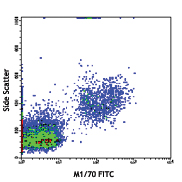
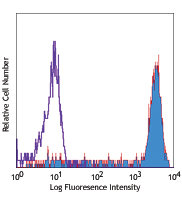
Compare Data Across All Formats
This data display is provided for general comparisons between formats.
Your actual data may vary due to variations in samples, target cells, instruments and their settings, staining conditions, and other factors.
If you need assistance with selecting the best format contact our expert technical support team.
-
Purified anti-mouse/rat/human CD27
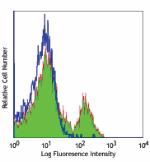
C57BL/6 mouse splenocytes stained with purified LG.3A10, fol... -
Biotin anti-mouse/rat/human CD27

C57BL/6 mouse splenocytes stained with biotinylated LG.3A10,... -
FITC anti-mouse/rat/human CD27
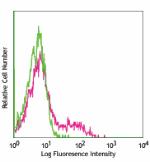
C57BL/6 mouse splenocytes stained with LG.3A10 FITC -
PE anti-mouse/rat/human CD27
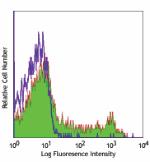
C57BL/6 mouse splenocytes stained with LG.3A10 PE 
Multiplexed IHC staining of PE anti-CD27 (clone LG.3A10) on ... -
APC anti-mouse/rat/human CD27
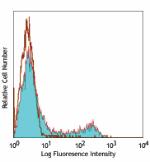
C57BL/6 mouse splenocytes stained with LG.3A10 APC -
PerCP/Cyanine5.5 anti-mouse/rat/human CD27

C57BL/6 mouse splenocytes were stained with CD45R/B220 APC a... -
PE/Cyanine7 anti-mouse/rat/human CD27
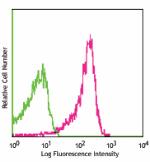
C57BL/6 mouse thymocytes stained with LG.3A10 PE/Cyanine7 -
Pacific Blue™ anti-mouse/rat/human CD27
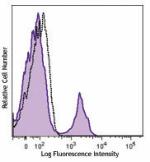
C57Bl/6 mouse splenocytes were stained with CD27 (clone LG.3... -
Alexa Fluor® 647 anti-mouse/rat/human CD27
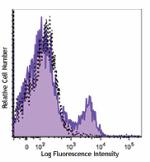
C57Bl/6 mouse splenocytes were stained with CD27 (clone LG.3... -
Alexa Fluor® 488 anti-mouse/rat/human CD27
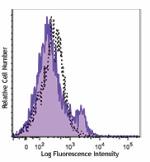
C57Bl/6 mouse splenocytes were stained with CD27 (clone LG.3... -
Brilliant Violet 421™ anti-mouse/rat/human CD27
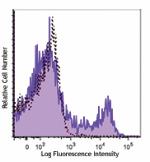
C57Bl/6 mouse splenocytes were stained with CD27 (clone LG.3... -
APC/Cyanine7 anti-mouse/rat/human CD27

C57BL/6 mouse splenocytes were stained with CD45R/B220 APC a... -
PE/Dazzle™ 594 anti-mouse/rat/human CD27
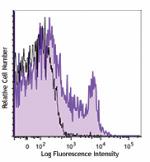
C57B/6 mouse splenocytes were stained with CD27 (clone LG.3A... -
Brilliant Violet 510™ anti-mouse/rat/human CD27

C57B/6 mouse splenocytes were stained with CD27 (clone LG.3A... -
Brilliant Violet 650™ anti-mouse/rat/human CD27
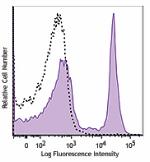
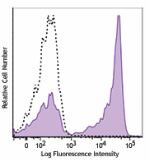
-
TotalSeq™-A0191 anti-mouse/rat/human CD27
-
Brilliant Violet 785™ anti-mouse/rat/human CD27

C57BL/6 mouse splenocytes were stained with CD45R/B220 PE an... -
APC/Fire™ 750 anti-mouse/rat/human CD27

C57BL/6 mouse splenocytes were stained with CD45R/B220 PE an... -
Alexa Fluor® 700 anti-mouse/rat/human CD27

C57BL/6 mouse splenocytes were stained with CD45R/B220 PE an... -
Ultra-LEAF™ Purified anti-mouse/rat/human CD27
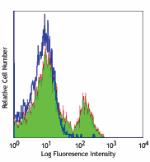
C57BL/6 mouse splenocytes stained with purified LG.3A10, fol... -
TotalSeq™-C0191 anti-mouse/rat/human CD27
-
TotalSeq™-B0191 anti-mouse/rat/human CD27
-
Brilliant Violet 605™ anti-mouse/rat/human CD27

C57BL/6 mouse splenocytes were stained with CD45R/B220 APC a... -
Spark PLUS UV395™ anti-mouse/rat/human CD27

C57BL/6 mouse splenocytes were stained with anti-mouse CD45R... -
Spark Blue™ 550 anti-mouse/rat/human CD27 (Flexi-Fluor™)
-
Spark Blue™ 574 anti-mouse/rat/human CD27 (Flexi-Fluor™) Antibody
-
Spark Red™ 718 anti-mouse/rat/human CD27 (Flexi-Fluor™)

 Login / Register
Login / Register 



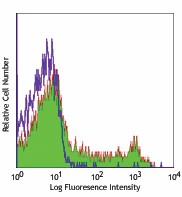









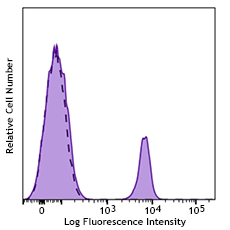
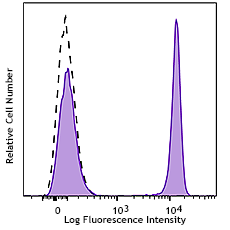





Follow Us